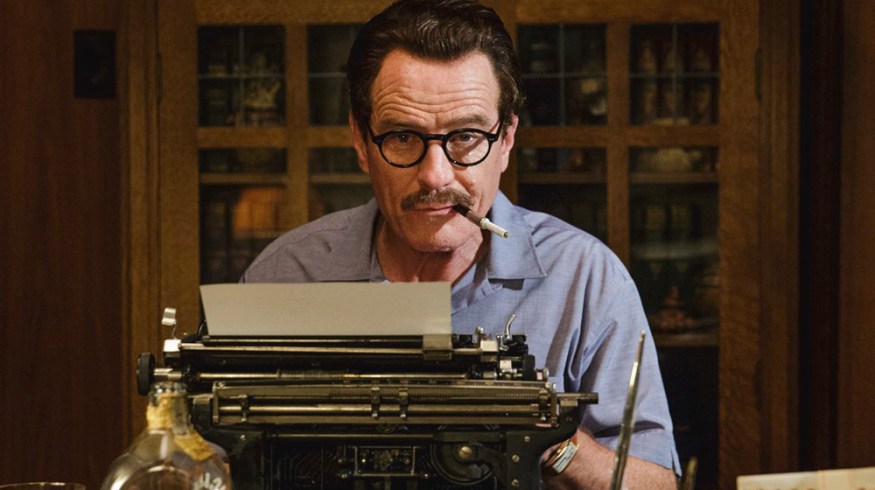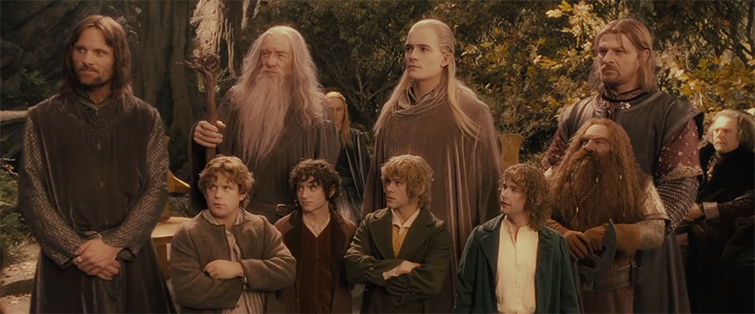
5 Tips from the Pros for Adapting Books into Film Scripts
Interested in adapting books into screenplays? Follow these professional tips to create practical adaptations for the big screen.
Cover image from Trumbo (via Bleecker Street).
Writing a script can be hard work. It takes a lot to put pen to paper (or even just open Final Draft) and build a story from scratch, develop a narrative, define characters and conflicts, and tie it all together with a nice thematic and cinematic bow.
It would make sense for screenwriters and filmmakers to gravitate towards stories that are already tried and true and popular with audiences — as is the case with books. From canonical classics to modern bestsellers, books make great fodder for screenplay adaptations.
That is, until, you dive into one yourself. Adapting books is harder than it looks, and it can be one of the most difficult and frustrating tasks for filmmakers and writers alike. But, fear not, here are five pieces of adapting advice from the pros who have been there and successfully done just that.
1. Find the Narrative Arcs

Image from Life of Pi (via 20th Century Fox).
I’ve written screenplays and teleplays adapting novels, and it is admittedly hard to distill the essence of a story from a world in which it exists as words and impressions guiding the pure imagination of the audience, and a visual medium that is defined by what you see and hear as well as what you don’t see or hear. You have to be able to find the narrative and the arcs, and lift them out of the book in one piece through interpretation into precise visual and audio descriptions.
This first piece of advice, which comes from professional screenwriter and film critic for Forbes Mark Hughes (via the Huffington Post), jumps into the crux of the process for adapting long-form novels into film- and television-ready scripts. At the end of the day, the narrative arc is the most important (and often most memorable) part of a book. It stands to reason that when working a book into a script, this should be your first and primary focus for beginning an adaption.
2. Resist the Urge of Voice Over

Image from Big Fish (via Sony Pictures).
I think one reason that many adaptations rely on voice-over is that the filmmakers never found a way to externalize the essence of the novel they were adapting. Instead of making a movie that could stand on its own, they created the cinematic equivalent of a book-on-tape. To me, these movies always ‘feel’ written, a huge limitation.
To many screenwriters who work in adaptions, the allure of using an “author’s voice-over” makes sense. But, as John August points out (who certainly knows a thing or two about adaption writing with credits which include Big Fish, Charlie’s Angels, and Charlie and Chocolate Factory — to name a few), it’s a crutch that can actually negate a work’s authenticity and essence by creating that “book-on-tape” feeling, which is not ideal for films.
3. Don’t Be Afraid to Cut

Image from The Fellowship of the Ring (via Warner Bros).
Cutting happens in layers. First identify the theme and the protagonist’s outer motivation. If the subplots don’t support them, cut them, along with any minor characters that are distracting. Then layer the outer motivation with the hero’s inner motivation. Again, if a plot point has nothing to do with either, cut it.
In an article on her website Script Mag, Jeanne Veillette Bowerman breaks down her process of adapting the New York Times Best Seller and Pulitzer Prize-winning book Slavery by Another Name into a feature film. In particular, she outlines the brutal mindset needed to cut a book down judiciously as “storylines that support a 400-page book cannot possibly fit into 110 pages of script” — and to “get your chainsaw ready to start pruning.”
4. Avoid Long Thinking

Image from The Great Gatsby (via Warner Bros).
Some tribes of American Indians had a word to describe those of their brethren who sat around thinking deep thoughts. Literally the word translated to The Disease of Long-Thinking. Quite often, lead characters in novels suffer from this disease. When essential plot information is presented only in a character’s thought or in the character’s internal world, one solution is to give this character a sounding board, another character, to which his thoughts can be voiced aloud. Either adapt an existing character from the novel or create a new one.
Challenges to screenwriters adapting books will continuously present themselves throughout the process. As we learn from Lynne Pembroke and Jim Kalergis from coverscript.com, you can cut novel characters’ tendency to “long-think” internal problems and thoughts — or better attribute them to another character.
5. Show, Don’t Tell

Image from The Giver (via The Weinstein Company).
Screenplays are about showing everything on the sleeve. There is some very minor telling (in the form of montages), but ‘show, don’t tell’ is a must in this purely visual medium. Yet novels allow for far more telling than showing. This is naturally difficult for screenwriters, because the script development process rejects long exposition and non-visual storytelling. Learning how to utilize lengthier exposition requires a whole new mindset.
Perhaps the best piece of advice for screenwriters for adaptions or originals is in this article by accomplished screenwriter Jeff Lyons on the importance of “showing, not telling” an audience what is happening. As the differences between watching a film and reading a book are quite obvious, it can still be tricky to remember that visual information can both be more concise and entertaining at the same time.
For more scripting and screenwriting resources, check out some of the links below.






